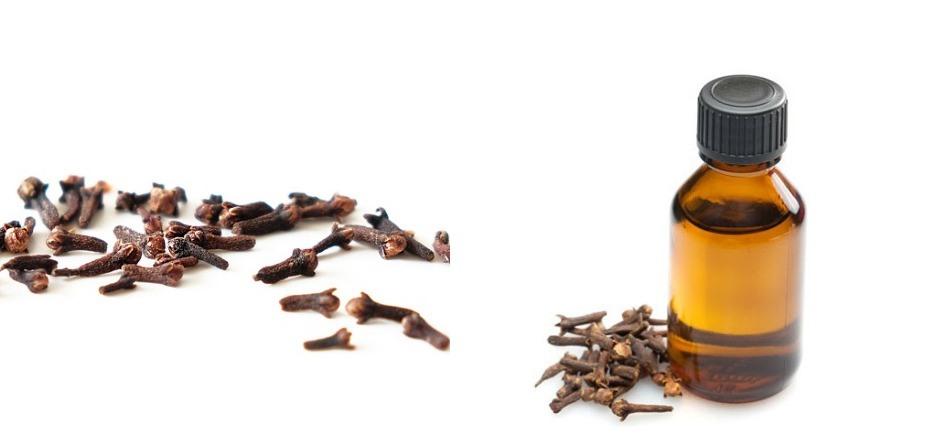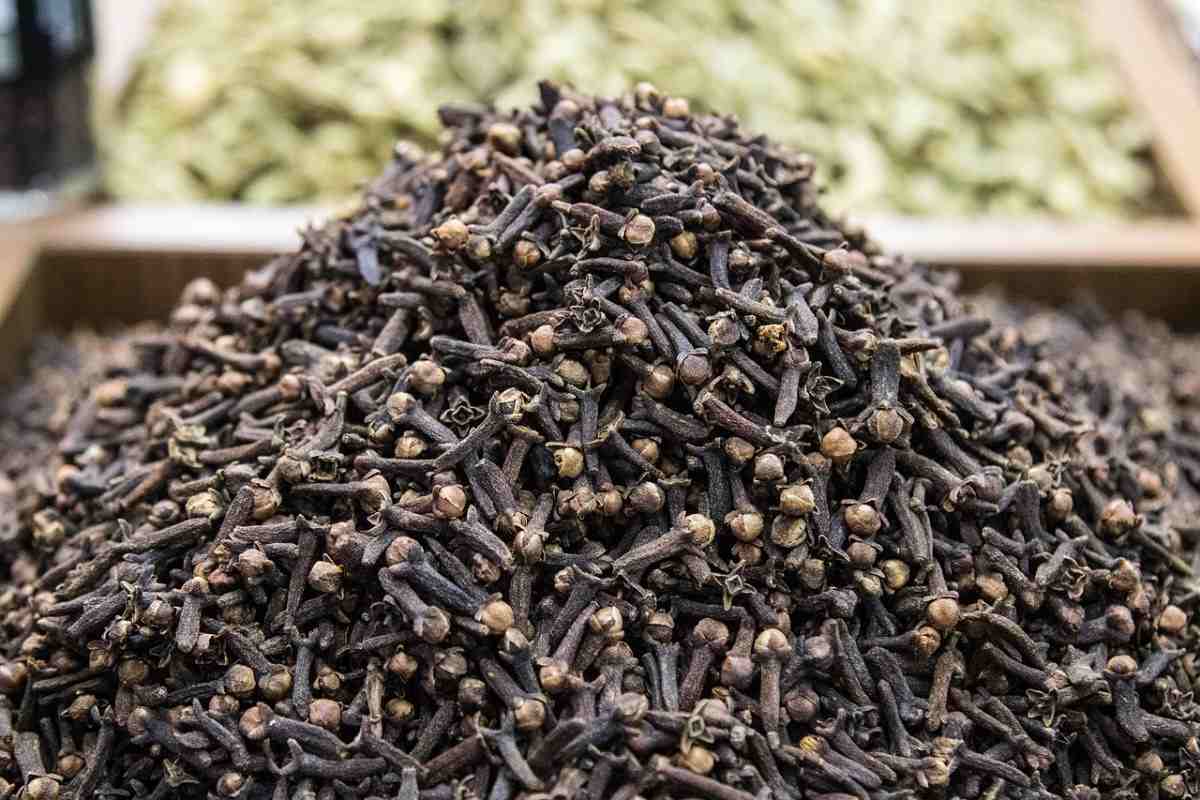Introduction to Clove Oil Project Report, Manufacturing Business Plan: Clove oil is one type of essential oil produced in India. The oil is obtained by extraction of oil from flower stalks flowers and third leaf. The most advantageous the extraction from the leaves. Therefore, the general clove oil is the clove leaf oil.
Clove leaf oil is an essential oil produced in Indonesia using water distillation and steam distillation method. Clove leaf oil is a liquid that is translucent and is in yellowish in color, having spicy taste, and fragrance of cloves. The color will change to brown or purple because of the iron that is present in storage containers or the iron that comes in contact during the various steps that involve iron devices or machinery. The clove leaf oil obtained after distillation of clove leaf contains 70-80% eugenol but the commercial oil requires 90% eugenol.
The main ingredient of clove oil are terpenes and their derivatives. This is a significant component in industrial units as they are used for making perfumes, pharmaceuticals, flavors, paints, plastics and others. Terpenes present in clove oil are eugenol, caryophylene and eugenol acetate. Ketiga, the chief component of clove oil is around 99% in the extracted essential oils.
Essential oils like clove oils are produced from cloves or leaves or even stems. Most of it contains Eugenol. Eugenol has a phenol group, so it is layered with NaOH to form salts. Sodium eugenol can be soluble in water. After performing the layering process, clove oil is placed on the Cassia flask on its neck, because it cannot be layered with terpenes which are insoluble in water, this helps to know the volume of terpenes in the oil. Eugenol oil volume can be calculated by measuring the difference between the volume of clove oil and the volume of terpenes.
A guide to Clove Oil Project Report, Manufacturing Process, and Business Plan

Market potential of Clove Oil Manufacturing Business: Global “Clove Oil Market” has changed extensively in recent years and projected to vary significantly within the upcoming years because of modification in production sources, changes in consumer preferences and even because of business policies. Clove Oil Market is attaining important adoption among present ventures across the globe. Global Clove Oil Market Report 2021 gives total analysis about the industry size through the key players, locations, product types and end user with past data and predicted data from the year 2026. This report is providing the Clove Oil information with respect to distinct growth trends, future forecasts, and their input to the total market.
Business plan to start Clove Oil Manufacturing Process
You need to consider the below points before starting the Clove Oil Manufacturing Unit in India.
- List of licenses, registration and permissions
- Implementation schedule of project
- Raw materials required
- Machinery required
- Production process
- Estimated cost and
- Profit analysis
List of approvals required to start Clove Oil Manufacturing Business in India
Below is the list of license, registration and permissions required to start Clove Oil Manufacturing Business:
- MSME registration
- GST registration
- ROC
- Registration of firm
- Shop Act License
- FSSAI License
- IEC Code
- Export License
- Fire and Safety
- ESI
- PF
- No Objection Certificate from pollution board
- Trade license from local municipal authority
Area required to start Clove Oil Manufacturing Business
To start a small – scale Clove Oil Manufacturing Business, you require 100 – 200 sq. mt of area.
List of machinery required for starting Clove Oil Manufacturing Business
Below is the list of machinery required to start Clove Oil Manufacturing Business –
- Condenser
- Evaporate vessel
- Pump (condensate)
- Florentine flask
- Pump (cooling water)
- Steam boiler
- Cooling tower
Manufacturing process of Clove Oil
1. Raw material preparation
Clove leaf is the main raw material used for the process and one must take care that the leaves are dry, intact and clean.
2. Preparation of boiler system – The kettle flute
Before starting with the boiler system, the excess water must be removed before distillation, as it includes salt water and could lead to degradation of components which may affect the quality of oil produced.
3. Insert the leaves into the kettle flute
There is no need of shredding the dried leaves and this can be fed directly into the kettle flute. Charging is done in steps and is trampled, forced to upsurge the leaves densities in the kettle. The standard density of dry clove leaves for the kettle around 70 – 80 grams / litre.
4. Distillation process
Distillation with water vapor is the extensively used process. This method is appropriate for those type of essential oils that are not affected by the hot steam. Raw materials are added separately in water. To ease the process of evaporation, the container for raw materials should be given sufficient space and not be packed heavily. After that, the kettle is closed and then heated for around 5-7 hours. Steam and clove leaf oil vapor is passed through flowing circular pipe into a cooling pond (condenser). Temperatures are very significant for this step. Pipe in the cooling pond is around 10 meters in length. If you acquire a getting longer pipe is used, condensation process will be better. In industries, often elongated pipes are generally employed but not circular as they are available at low cost comparatively. Pipes should be checked for no leakage and the water temperature optimised and regulated so that condensation is done properly.
Clove oil distillates and the water flows into the drums of the refining process. This continues for about seven hours, after which the oil and the water gets settled separately. Clove oil can be collected from the bottom of the flask. As the oil has more weight it gets settled bottom of the flask so it is collected easily but some oil traces are left in the water which is collected by using separation process.
Long distillation of clove leaf wet about 7-8 hours and distillation of dried leaves around 6-7 hours. With more pressure from 1 bar to 2 bar, long distillation step can be reduced to 4-5 hours. The yield of clove leaf oil produced is approximtely 2.0 to 2.5%.
5. Cooling or Condensation process
Cooling is performed by cooling unit (condenser) refrigerant pipe model of multi-tubular or spiral mounted in a tube submerged in a water bath or cooling. The cooling water system is used to in opposite directions so that the vapour flow within the pipe. This process is done to distillate and to condensed it perfectly.
6. Distillation process
Distillation process is conducted to separate the oil based on the principle of difference of density between the oil and water. Because oil has density greater than 1 and the cooling temperature which is incoming into helps to separate oil from the water. As the density of oil is greater than 1 it gets settled at the bottom of the flask and separated it from the water which is above the oil.
7. Filtration process of oil
The produced oil still looks cloudy because it still includes a small amount of water and foreign materials in oil. Water will be separated by filtering the oil with Teflon fabric / screen printing or can be performed by pouring Anhydride Sodium Sulfate (Na2SO4) as a binder of water of 1% then agitated and filtered.
8. Bleaching of Clove oil
When the oil produced is still having yellow brown / dark brown color it indicates the presence of metallic iron which has been distilled from kettle distilled from the oil containers and devices made of iron. So, this ferrous metal can be separated in 2 ways of bleaching, that is by
1) Bleaching of clove leaf oil under vacuum;
2) Bleaching by including chelating agent like tartaric acid or citric acid.
Clove Oil Project Report/ Economics of Clove Oil Manufacturing Business in India
In case if you miss this: Coconut Oil Manufacturing Project Report.

Fixed Capital:
1. Land and Building with covered area of 200 sq. mtrs: Rs. 1,00,000
2. Plant and machinery cost: Rs. 6,92,000/-
3. Miscellaneous fixed assets
(a) Electrification: Rs. 1,65,000
(b) Water Installations: Rs. 44,000
(c) Miscellaneous others: Rs. 55,000
Total: Rs. 2,64,000.
4. Provision for contingencies: Rs. 49,500
5. Preliminary and Pre-operative expenses: Rs. 60,500
Total fixed Costs: Rs. 12,00,000.
Working Capital:
(a) One month’s raw materials: Rs. 1,89,292
(b) One month Power cost: Rs. 17,585
(c) One month Wages and Salaries: Rs. 35,750
(d) One month other expenses: Rs. 54,450
Total Working Capital: Rs. 2,97,077
Total project cost: Rs.14,97,077
(Say Rs.14,97,000).
Profit in Clove Oil Making Business
Annual Sales Realization: Rs. 20,00,000
Profit = Sales – Project Cost = Rs. 20,00,000 – Rs. 14,97,000
Profit per annum = Rs. 5,03,000.
- Handicraft Making at Home: A Small Profitable Business Idea
- Pet-Tech Startups: Innovations for Animal Lovers
- Tech Repair Services: Meeting the Demand for Gadget Maintenance
- Maximizing Rewards: Smart Credit Card Habits for Cashback and Points
- Ultimate Guide to Making Money from Goat Milk Business
- How to Start an Agricultural Value Added Product Business
- Value-Added Business Ideas for Greenhouse: The Best Ways to Make Profits with Greenhouse Farming
- How to Make Profits with Organic Country Chicken: Best Strategies for Beginners
- 10 Value-added Business Ideas for Millets: Low-investment and Highly Profitable
- Why Cleaning Service Business Becoming More Profitable in Metro Cities in India
- 10 Best Businesses to Start in Ayodhya for Profits
- Top Drone Business Ideas in India: Unlocking Aerial Innovation & Opportunities
- Top 10 Service Businesses You Can Start with No Money
- Ultimate Guide to Starting a Home-Based Advertising Agency Business
- Starting a Nail Salon Near Your Location: Check List, Business Plan, Licensing, and Opening Instructions
- Construction Company Name Ideas: Guide to Create New Construction Company Names
- 8 Best Small Businesses to Start in Hyderabad: Low-Cost and Profitable
- 10 Best Small Businesses to Start in Massachusetts: Low-Cost and Profitable
- 10 Best Small Businesses to Start in Maryland: Low-Investment and Profitable
- 10 Best Small Businesses to Start in Delaware: Low-Investment and Profitable
- 10 Best Small Businesses to Start in Connecticut: Low-Investment and Profitable
- Top 10 Best Online Pet Business Ideas: Exploring Cats to Dogs
- 10 Best Small Businesses to Start in Colorado: Low-Investment and Profitable
- Top 10 Profitable Small Business Ideas in California: Low-Investment Tips